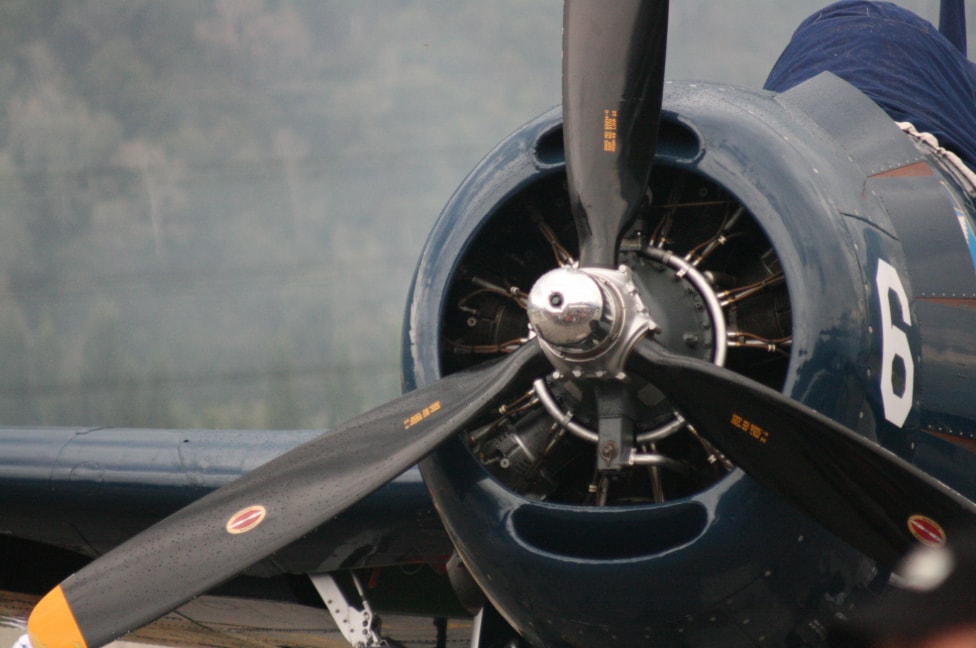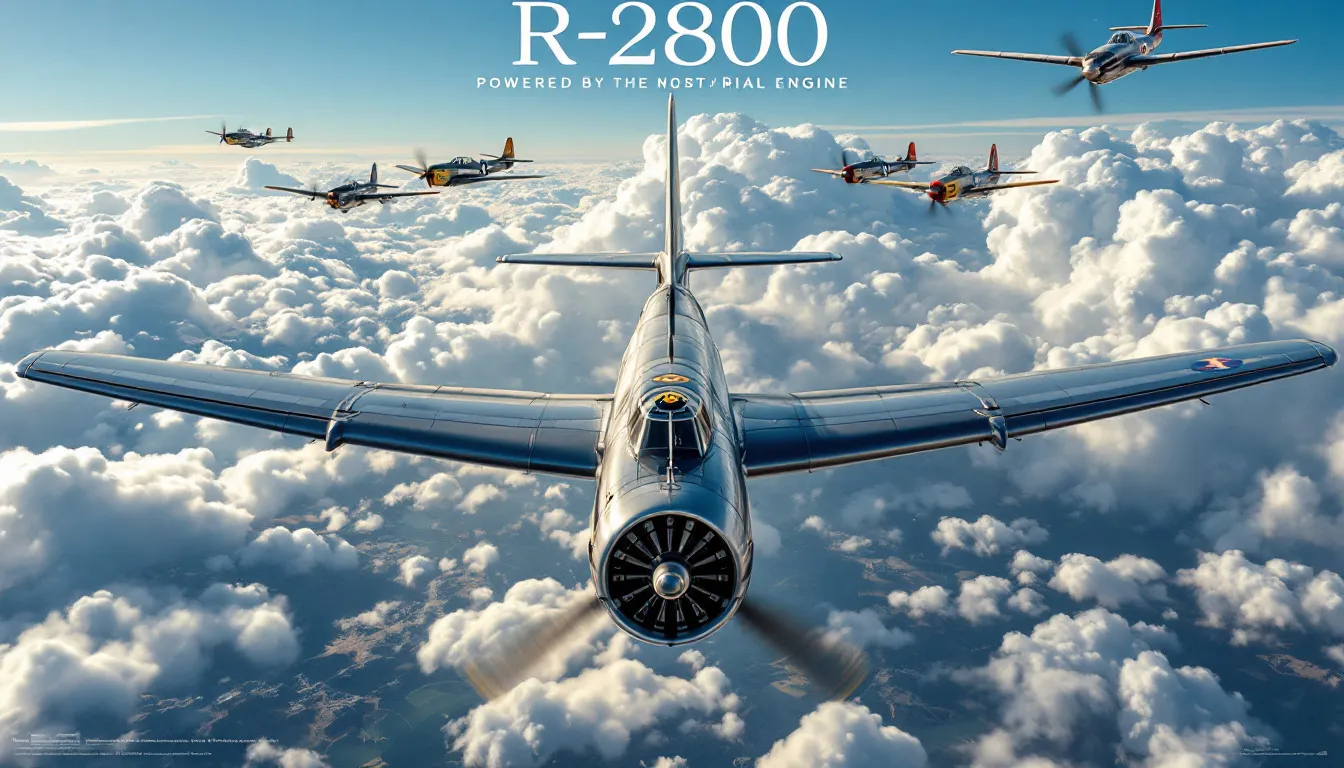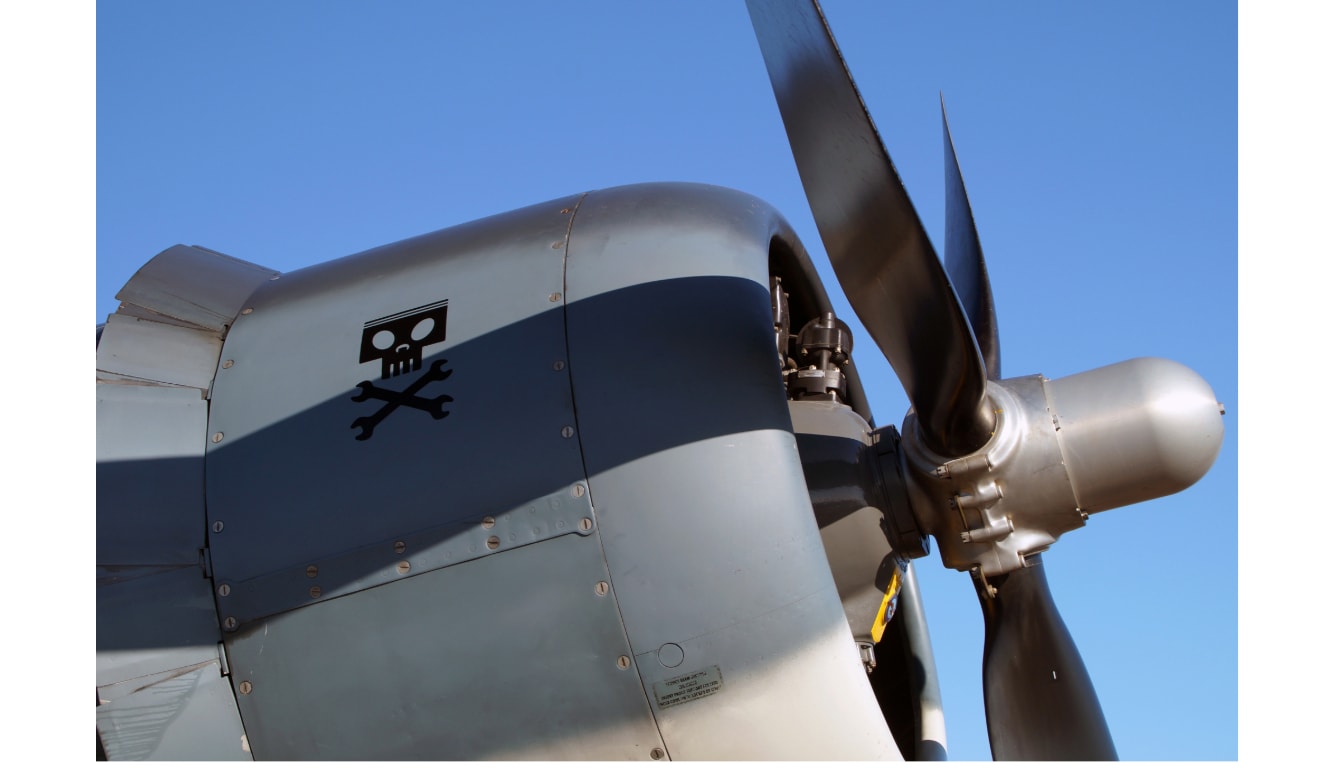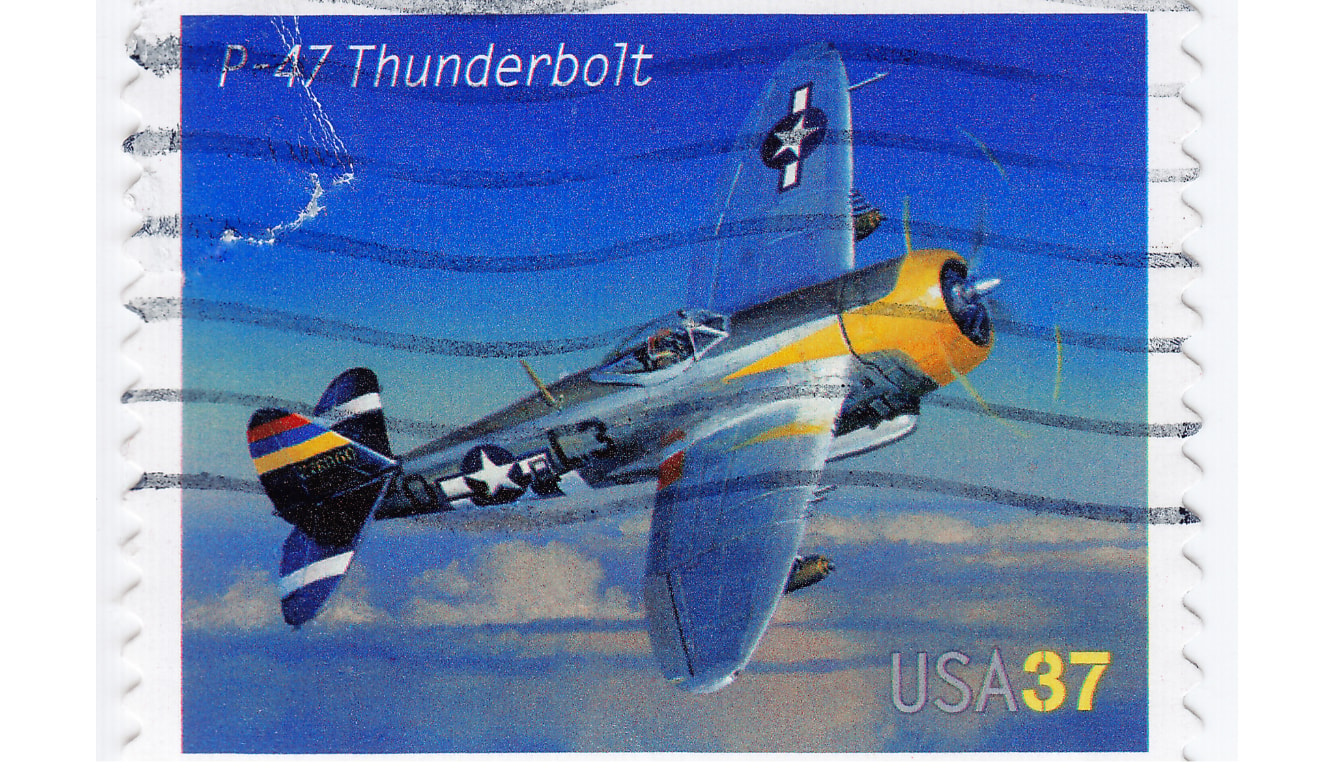Which Aircraft Use the Pratt Whitney R82800 Engine?
The Pratt & Whitney R-2800 engine powered key aircraft like the Republic P-47 Thunderbolt and Vought F4U Corsair. This article delves into these aircraft and the engine’s impact on aviation history.
Key Takeaways
-
The Pratt & Whitney R-2800 Double Wasp engine was a groundbreaking 18-cylinder radial aircraft engine that significantly influenced military aviation during and after World War II.
-
Iconic aircraft powered by the R-2800 include the Republic P-47 Thunderbolt, Vought F4U Corsair, Grumman F6F Hellcat, and Douglas A-26 Invader, each excelling in speed and combat performance.
-
The R-2800’s legacy extends beyond its operational success, paving the way for future Pratt & Whitney engine developments, which enhanced performance and reliability in aviation technology.
Overview of the Pratt & Whitney R-2800 Engine

The Pratt & Whitney R-2800 Double Wasp stands as a testament to engineering excellence. Developed in 1937, this 18-cylinder, air-cooled radial aircraft engine quickly became a cornerstone of American aviation. Renowned for its significant contribution to aircraft performance during its operational years, the R-2800 set new standards in reliability and power output, influencing subsequent engine designs.
The R-2800 spurred advancements in aviation engineering and influenced the design principles of reliability and power in later models. Its legacy extends beyond the aircraft it powered to the technological innovations it inspired.
Development and History
The R-2800 engine, first run in 1937, enabled the development of larger, more powerful fighters capable of high-altitude operations, fundamentally changing military aerial combat tactics and the landscape of aerial warfare.
The engine’s operational history is marked by continuous improvement and adaptation, setting the stage for future aviation advancements.
Specifications
The technical prowess of the Pratt & Whitney R-2800 is evident in its impressive specifications. With a maximum output of 2,500 horsepower and a weight of approximately 2,195 pounds (995 kg), this engine was a powerhouse. Its dimensions, 4 ft 8 in (1.42 m) in length and 3 ft 6 in (1.07 m) in diameter, made it a compact yet powerful component for various aircraft.
Aircraft with the R-2800 could reach speeds of around 643.74 km h, greatly enhancing their combat effectiveness.
Aircraft That Used the R-2800 Engine

The Pratt & Whitney R-2800 engine powered several iconic aircraft, including the Republic P-47 Thunderbolt, Vought F4U Corsair, Grumman F6F Hellcat, and Douglas A-26 Invader. These aircraft achieved top speeds exceeding 400 mph, showcasing the engine’s performance and reliability.
The R-2800 powered a diverse range of aircraft, each with a unique role in the war effort. From the rugged P-47 Thunderbolt to the formidable F4U Corsair, the R-2800 was central to some of the most successful and innovative aircraft of its time.
Republic P-47 Thunderbolt
The Republic P-47 Thunderbolt, equipped with the R-2800 engine, became renowned for its speed and firepower during World War II. Capable of reaching a top speed of 433 mph, the P-47 was a formidable opponent in the skies.
Today, numerous P-47 Thunderbolt aircraft can be found in museums worldwide, including the Museum of Flight in Seattle and the Royal Air Force Museum in London, showcasing its historical significance.
Vought F4U Corsair
The Vought F4U Corsair utilized the R-2800 engine, contributing significantly to its performance in World War II and the Korean War. This carrier-based fighter was known for its exceptional speed and agility, making it a formidable net aircraft in aerial combat.
The R-2800 engine greatly enhanced the Corsair’s performance.
Grumman F6F Hellcat
The Grumman F6F Hellcat’s reliance on the R-2800 engine was crucial for its success as a dominant naval fighter during World War II. With its powerful performance, the Hellcat achieved high speed and maneuverability, significantly enhancing the effectiveness of naval air operations.
The R-2800 engine’s contribution cemented the Hellcat’s status as the most successful naval fighter of the war.
Douglas A-26 Invader
The Douglas A-26 Invader, with the R-2800 engine, excelled in various combat roles, performing admirably in light bomber and attack missions, showcasing the engine’s flexibility and power.
Performance and Reliability

Celebrated for its outstanding reliability and robust performance, the R-2800 engine consistently produced high horsepower, crucial to the success of many World War II aircraft. Its reliability in combat significantly influenced military aviation strategies and boosted the operational effectiveness of the aircraft it powered.
Beyond performance, the R-2800’s durability and ease of maintenance ensured operational aircraft even under intense combat conditions, making it a preferred choice for various military aircraft, from fighters to bombers.
Maximum Speed and Rate of Climb
With a maximum power output of 2,500 horsepower, the R-2800 was one of the most powerful engines of its time. This immense power enabled speed enhancements, making aircraft like the F4U Corsair the first American single-engine fighter to surpass 400 mph in level flight.
The engine’s superior power output compared to contemporaries like the Wright R-2600 established a competitive edge in fighter aircraft.
Service Ceiling and Range
The R-2800 engine allowed aircraft to achieve service ceilings over 34,000 feet, enhancing their tactical versatility. Its performance outshined many contemporary engines, offering a significant advantage in reliability and power-to-weight ratio.
Maintenance and Durability
Noted for its power and durability, the R-2800 was often compared to the Wright R-3350, which struggled with cooling issues. Its robust performance and reliability allowed various aircraft to maintain operational effectiveness during intense combat, significantly influencing military aviation.
Impact on Military Aviation

Powering numerous pivotal aircraft during and after World War II, including fighters and bombers, the R-2800’s robust performance and reliability made it a popular choice, significantly contributing to operational effectiveness and influencing aviation technology and military strategies.
From the P-47 Thunderbolt to the F6F Hellcat, the R-2800 engine proved to be a game-changer in military aviation. Its ability to enhance aircraft performance and enable new tactical approaches was instrumental in the success of many Allied air operations during the war.
Role in World War II
The R-2800 engine was crucial for the P-47 Thunderbolt, which became one of the most prolific American fighters during World War II. This engine-powered aircraft flew over 746,000 missions and achieved a remarkable survival rate, contributing to the Allies’ air superiority.
The F4U Corsair and F6F Hellcat, also powered by the R-2800, gained fame for their exceptional speed and agility, making significant contributions to the war effort.
Post-War Usage
After World War II, aircraft powered by the R-2800 continued to serve in various military roles, highlighting the engine’s lasting influence on aviation technology.
The continued success of the R-2800 engine in military aircraft into the late 20th century underscores its significant legacy.
Surviving Aircraft and Museums

The Pratt & Whitney R-2800 engine powered numerous iconic aircraft, several of which still exist today. Notable surviving aircraft include the Vought F4U Corsair, Grumman F6F Hellcat, and Douglas A-26 Invader, featured in various U.S. museums, preserving their legacy for future generations.
Museums play a crucial role in showcasing these historic aircraft. Preserving and displaying R-2800-powered planes allows enthusiasts and historians to appreciate their engineering marvels and contributions to aviation history.
Museum Exhibits
The Flying Heritage Collection in Everett, Washington, regularly features P-47 aircraft and participates in relevant events. The Museum of Flight in Seattle and the Palm Springs Air Museum also showcase restored P-47D Thunderbolts, highlighting their historical significance and engineering prowess.
These exhibits are essential in keeping the legacy of the R-2800-powered aircraft alive.

Airshows and Events
Various airshows feature flying displays of R-2800-powered aircraft like the P-47 Thunderbolt, attracting aviation enthusiasts worldwide. These events celebrate the engineering marvel of the R-2800 engine and honor the pilots and aircraft that played pivotal roles in history.
Watching these historic planes take to the skies offers spectators a glimpse into the past, experiencing the power and performance of these legendary machines firsthand as they fly with wings.
Related Developments and Successors
The legacy of the Pratt & Whitney R-2800 engine extends beyond its operational years. Pratt & Whitney developed several later engines building on the R-2800’s design principles, leading to enhanced performance and reliability. These advancements set new standards in aviation engineering, with models like the R-4360 achieving higher horsepower and improved efficiency.
The R-2800’s design and performance were often compared to contemporaneous engines like the Wright R-3350 and Rolls-Royce Merlin. These comparisons highlighted differences in power output, weight distribution, and thermal efficiency, influencing aircraft manufacturers and leading to further innovations.
Pratt & Whitney Innovations
Pratt & Whitney’s commitment to innovation is evident in the engines developed after the R-2800. Lessons learned from the R-2800’s design led to engines that outperformed their predecessors in power and efficiency. The R-4360, for example, incorporated advanced cooling techniques and manufacturing processes, resulting in greater reliability and performance.
These innovations cemented Pratt & Whitney’s reputation as a leader in aviation engineering for the company.
Comparable Engines
The Pratt & Whitney R-2800 was a significant advancement in aircraft engine technology. Compared to engines like the Wright R-3350, the R-2800 stood out for its superior power output and robust design. These comparisons influenced aircraft development, guiding manufacturers toward engines that offered optimal performance and reliability.
The R-2800’s legacy is reflected in the continued evolution of the piston engine and their role in aviation history.
Summary
The Pratt & Whitney R-2800 engine remains a marvel of engineering and a cornerstone of aviation history. Its development marked a significant leap in aircraft performance, enabling the creation of some of the most iconic aircraft of World War II and beyond. The engine’s robust design and reliable performance made it a preferred choice for various military roles, from high-speed fighters to versatile bombers.
In summary, the R-2800’s impact on military aviation is profound. It powered aircraft that played crucial roles in achieving air superiority during World War II and continued to serve in various capacities post-war. The engine’s legacy lives on in museums and airshows, where enthusiasts can witness the power and precision of these historic machines. The R-2800’s story is one of innovation, reliability, and enduring influence on the field of aviation.
Frequently Asked Questions
What aircraft used the Pratt & Whitney R-2800 engine?
The Pratt & Whitney R-2800 engine powered several iconic aircraft, notably the Republic P-47 Thunderbolt, Vought F4U Corsair, Grumman F6F Hellcat, and Douglas A-26 Invader. These aircraft are recognized for their significant contributions during World War II.
How powerful is the Pratt & Whitney R-2800 engine?
The Pratt & Whitney R-2800 engine delivers a remarkable maximum output of 2,500 horsepower, positioning it among the most powerful engines of its era.
Why was the R-2800 engine significant in World War II?
The R-2800 engine was significant in World War II because it powered key aircraft, providing them with high speeds and exceptional performance that were vital for combat effectiveness.
Are there any surviving R-2800-powered aircraft today?
Yes, several R-2800-powered aircraft, including the P-47 Thunderbolt and F4U Corsair, are still preserved and showcased in museums and airshows globally.
What advancements did Pratt & Whitney make after the R-2800 engine?
Pratt & Whitney made significant advancements after the R-2800 by developing the R-4360, which offered higher horsepower and improved efficiency, reflecting the company's commitment to innovation in aviation technology.


By RuthAS - Own work, CC BY 3.0, https://commons.wikimedia.org/w/index.php?curid=25451184







